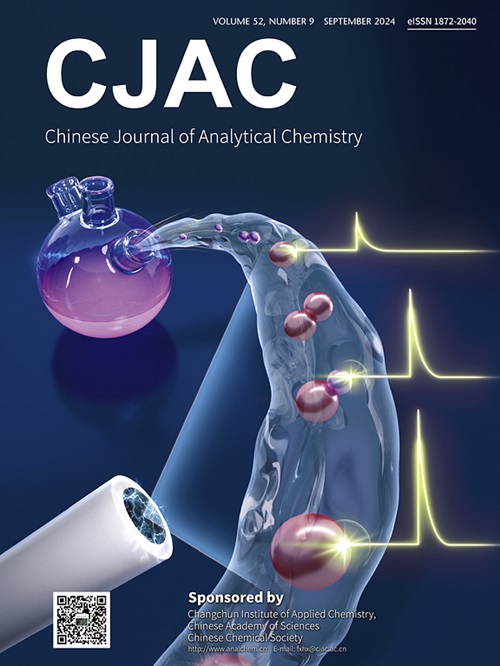Exploring the mechanism of Phyllanthus urinaria L. against ulcerative colitis based on network pharmacology and in vivo experiments
IF 1.2
4区 化学
Q4 CHEMISTRY, ANALYTICAL
引用次数: 0
Abstract
Objective
This study aims to explore the therapeutic effect and molecular mechanism of the aqueous extract of Phyllanthus urinaria L. (PUL) on ulcerative colitis (UC).
Method
PUL was administered to UC mice induced by 2.25 % DSS. The changes of body weight, disease activity index (DAI) score and colon length were recorded during the experiment. Hematoxylin and eosin (HE) staining was conducted for pathology analysis of the mice in each group. The contents of inflammatory cytokines in colon tissues were detected by Elisa. Additionally, ultra performance liquid chromatography quadrupole time-of-flight mass spectrometry (UPLC-TOF-MS/MS) method was employed to identify the main components of PUL. Then, the Traditional Chinese Medicine Systems Pharmacology Database and Analysis Platform (TCMSP) database was utilized to explore the potential active ingredients and drug targets of PUL. The matching of drug targets and disease targets yielded cross targets, which were used to construct a protein-protein interaction (PPI) network in String. Key targets underwent Gene Ontology (GO) and Kyoto Encyclopedia of Genes and Genomes (KEGG) enrichment analysis. Finally, Western blotting was performed to verify the key proteins expressions in the predicted pathway of network pharmacology and the expressions of tight junction proteins in the colon tissue.
Result
PUL has been found to effectively alleviate the symptoms such as weight loss, bloody stools, and colon shortening in mice with UC. Administration of PUL led to an increase in tight junction protein in the colonic tissue of mice, as compared to the model group. Elisa results revealed that PUL reduced the expression of pro-inflammatory factors in mice with UC. HE staining results show that PUL can alleviate colon tissue damage caused by UC. A total of 773 components were detected in the water extract of PUL, among which 26 components, including quercetin, epigallocatechin gallate and kaempferol, may possess anti-UC activity. Network pharmacology analysis suggested that PUL may play an anti-UC role by inhibiting tumor necrosis factor (TNF) pathway. Finally, Western blotting results confirmed that the PUL inhibited the TNF pathway and effectively treated UC.
Conclusion
These preliminary research results indicate that PUL has the potential to exhibit anti-inflammatory activity by inhibiting the TNF pathway, thereby alleviating symptoms associated with UC. Substances such as quercetin, epigallocatechin gallate and kaempferol in PUL are believed to play an important role in this process.

基于网络药理学和体内实验探讨余叶草抗溃疡性结肠炎的作用机制
目的探讨余甘子水提物(PUL)对溃疡性结肠炎(UC)的治疗作用及其分子机制。方法采用2.25% DSS致UC小鼠pul。记录实验期间体重、疾病活动指数(DAI)评分和结肠长度的变化。采用苏木精和伊红(HE)染色对各组小鼠进行病理分析。Elisa法检测大鼠结肠组织中炎性细胞因子的含量。采用超高效液相色谱-四极杆飞行时间质谱法(UPLC-TOF-MS/MS)对其主要成分进行鉴定。然后,利用中药系统药理学数据库与分析平台(TCMSP)数据库对PUL的潜在有效成分和药物靶点进行探索。通过药物靶点与疾病靶点的匹配得到交叉靶点,并利用交叉靶点构建蛋白-蛋白相互作用(PPI)网络。对关键目标进行基因本体(GO)和京都基因与基因组百科全书(KEGG)富集分析。最后通过Western blotting验证网络药理学预测通路中关键蛋白的表达以及结肠组织中紧密连接蛋白的表达。结果pul可有效缓解UC小鼠体重减轻、便血、结肠缩短等症状。与模型组相比,给药PUL导致小鼠结肠组织中紧密连接蛋白的增加。Elisa结果显示,PUL可降低UC小鼠促炎因子的表达。HE染色结果显示,PUL可减轻UC引起的结肠组织损伤。PUL水提物共检出773种成分,其中槲皮素、表没食子儿茶素没食子酸酯、山奈酚等26种成分具有抗uc活性。网络药理学分析提示,PUL可能通过抑制肿瘤坏死因子(TNF)通路发挥抗uc作用。最后,Western blotting结果证实PUL抑制TNF通路,有效治疗UC。结论这些初步研究结果表明,PUL可能通过抑制TNF通路发挥抗炎作用,从而缓解UC相关症状。PUL中的槲皮素、表没食子儿茶素没食子酸酯和山奈酚等物质被认为在这一过程中起着重要作用。
本文章由计算机程序翻译,如有差异,请以英文原文为准。
求助全文
约1分钟内获得全文
求助全文
来源期刊
CiteScore
3.60
自引率
25.00%
发文量
17223
审稿时长
35 days
期刊介绍:
Chinese Journal of Analytical Chemistry(CJAC) is an academic journal of analytical chemistry established in 1972 and sponsored by the Chinese Chemical Society and Changchun Institute of Applied Chemistry, Chinese Academy of Sciences. Its objectives are to report the original scientific research achievements and review the recent development of analytical chemistry in all areas. The journal sets up 5 columns including Research Papers, Research Notes, Experimental Technique and Instrument, Review and Progress and Summary Accounts. The journal published monthly in Chinese language. A detailed abstract, keywords and the titles of figures and tables are provided in English, except column of Summary Accounts. Prof. Wang Erkang, an outstanding analytical chemist, academician of Chinese Academy of Sciences & Third World Academy of Sciences, holds the post of the Editor-in-chief.

 求助内容:
求助内容: 应助结果提醒方式:
应助结果提醒方式:


